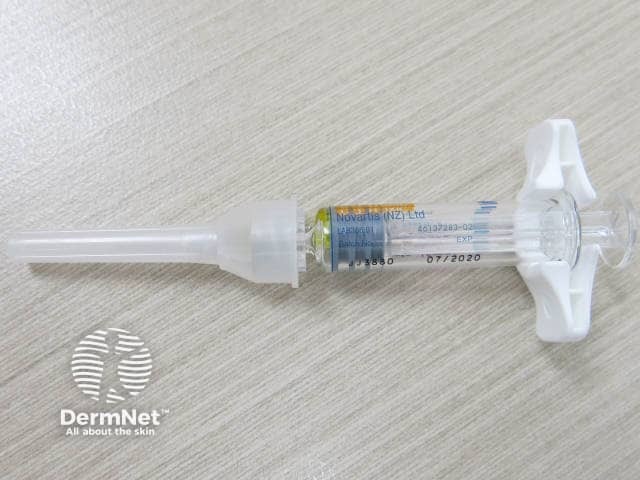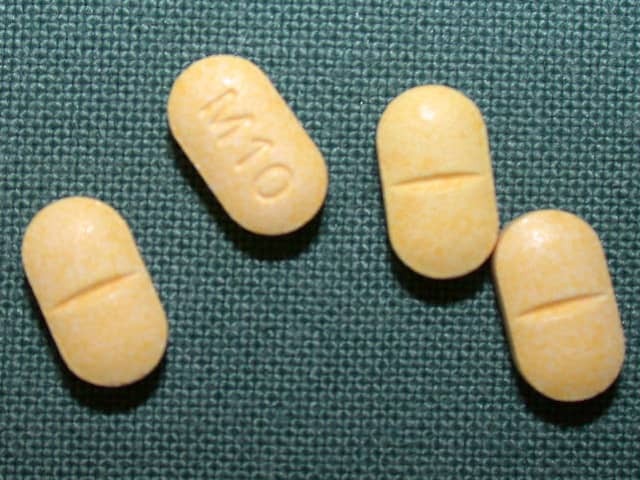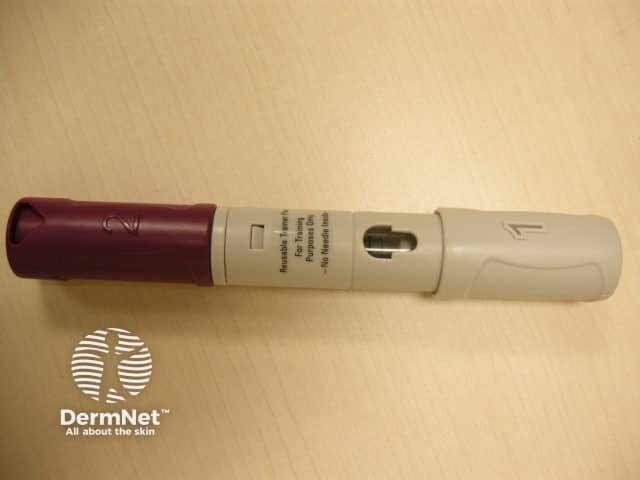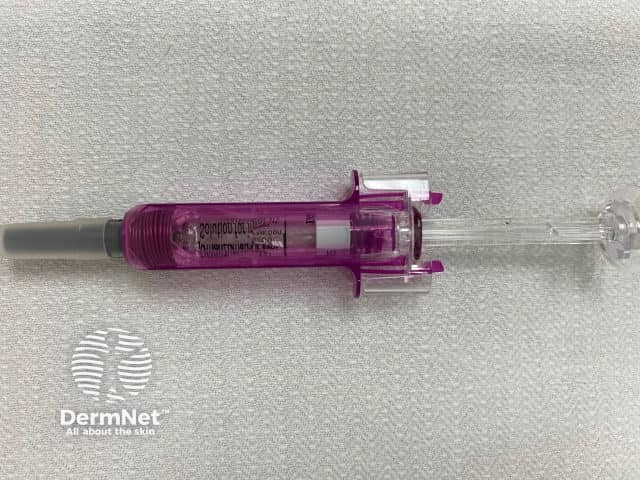Main menu
Common skin conditions

NEWS
Join DermNet PRO
Read more
Quick links
Author: Dr Leah Jones, Medical Registrar, Christchurch, New Zealand. DermNet Editor in Chief: Adjunct A/Prof Amanda Oakley, Dermatologist, Hamilton, New Zealand. Copy edited by Gus Mitchell. July 2020.
Introduction
Demographics
Causes
Clinical features
Complications
Diagnosis
Treatment
Outcome
Drug-induced immunosuppression, also known as medication-induced immune suppression, is impaired immune system function due to medications used in the treatment of systemic diseases. This typically manifests as recurrent, severe, unusual, or opportunistic infections [1].
Medications used to treat dermatological conditions can affect the immune system to a variable extent.
Chronic drug-induced immunosuppression for other reasons (for example, to prevent rejection in organ transplantation patients) can be associated with dermatological complications [2].
The main medications used in dermatology that cause significant drug-induced immunosuppression include [3]:
Prednisone tablets
Azathioprine tablets
Mycophenolate capsules
Other medications that result in a milder impairment of immune function, especially if in conjunction with other agents, include:

Methotrexate injection

Methotrexate tablets
Examples of biological agents are:

Adalimumab pen

Ustekinumab injection

Omalizumab syringe
Immunosuppressive therapy is used in a variety of dermatological conditions, including psoriasis, atopic dermatitis, autoimmune bullous diseases, and cutaneous lupus erythematosus [3,4]. In some patients, drug-induced immunosuppression involves multiple agents with synergistic effects on the immune system [5,6].
Drug-induced immunosuppression can occur by one or more mechanisms, including [1,5]:
High-dose chronic drug-induced immunosuppression is associated with non-infectious dermatological problems, such as acne, gingival enlargement, hypertrichosis, and induction of skin cancer, particularly cutaneous squamous cell carcinoma [2].
Drug-induced immunosuppression can lead to bacterial, viral, fungal, or parasitic infections, with different medications predisposing to specific types of organisms [6]. Some of these result in cutaneous disease, notably bacterial abscesses, herpes zoster, herpes simplex, cytomegalovirus, and viral warts [2].
Bacterial infections associated with drug-induced immunosuppression include [6]:
Viral infections associated with drug-induced immunosuppression include [6]:
Fungal and parasitic infections associated with drug-induced immunosuppression include [6]:
Infections associated with drug-induced immune suppression can cause serious morbidity and potentially mortality, particularly in those with a poor functional state at baseline [6,7]. Immunosuppressive therapy can also change the clinical features of an infection, making it more difficult to diagnose [6].
The development of a serious infection can lead to complex clinical management decisions regarding the immunosuppressive treatment of the underlying condition [5,6].
Drug-induced immunosuppression prevents the administration of live vaccines and limits the efficacy of other vaccines [6]. If practical, it is best to have any recommended vaccinations prior to initiating immunosuppressive drug treatment [5,6]. [see Immunisation in immunosuppressed dermatology patients]
Drug-induced immunosuppression is a clinical diagnosis based on the known effects of the patient’s medications.
To quantify the extent of drug-induced immunosuppression, antibody response can be measured before and after vaccination for pneumococcus. However, this predominantly assesses humoral immunity, not cell-mediated immunity, and is rarely performed [8].
The effects of drug-induced immunosuppression can be limited by taking preventative measures such as [5,6]:
Antibiotics, antivirals (such as aciclovir), or antifungals should be prescribed promptly in response to symptoms and signs consistent with infection.
If infections are severe or recurrent, the immunosuppressive therapy may need to be reduced or stopped and alternative treatment options considered [1,6].
Drug-induced immunosuppression has a variable prognosis. This can be based on the characteristics of the drug, the patient, and the disease being treated [1,5,7].
Drug characteristics include:
Patient characteristics include:
Low-dose, single-agent immunosuppressive therapy for a short duration carries only a minor risk of serious infection and mortality [1,2,9].
Approved datasheets are the official source of information for medicines, including approved uses, doses, and safety information. Check the individual datasheet in your country for information about medicines.
We suggest you refer to your national drug approval agency such as the Australian Therapeutic Goods Administration (TGA), US Food and Drug Administration (FDA), UK Medicines and Healthcare products regulatory agency (MHRA) / emc, and NZ Medsafe, or a national or state-approved formulary eg, the New Zealand Formulary (NZF) and New Zealand Formulary for Children (NZFC) and the British National Formulary (BNF) and British National Formulary for Children (BNFC).